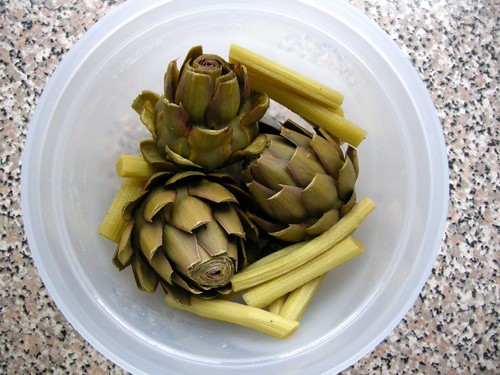It was not planned, but happened anyway – the Konjac came in to flower. The corm has rested dry in a cupboard since autumn. 3 weeks ago the bud started growing, very rapidly. Yesterday the flower opened and took on the deep red colour. When I returned after work, I had to cut the flower immediately, and carry it out door into the snow. It has a penetrating odour like decaying flesh, probably perfect to attract the flyes needed for pollination in it’s native habitat.
I’m impressed, that a flower can grow this rapidly from a corm, given no soil or water. All its nourishment and liquid was stored in the corm.
The corm is huge. In Japan they cook a delicacy, konnyaku, from it. It’s a kind of jelly, supposed to be healthy and a joy to eat. It’s also employed by the European food industry. It is labelled E 425. See if you can find it in the supermarket!
The flower I cut from the corm. I placed it in the snow in front of the kitchen window, and brought the corm inside the house again. The rest of the stem on top of the corm will soon wither away, and after a few months I can expect a single large leaf, shaped like a palm. I grow the Konjac for the beautiful leaf.
Last time I had a Konjac in flower was in 2008.
























